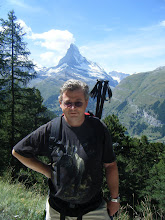Anti-islamic fascism
The intellectual community is mourning the death yesterday of the polemical atheist Christopher Hitchens, who was one of those to coin the term islamofascism.
Like his fellow-atheist Richard Dawkins (and I am an atheist too by the way), Hitchens put religion at the root of pretty much all evil. Again, like Dawkins, it was only a short step from this simplistic view to demonise Islam, on the basis the actions of a fanatical and brutal minority of followers of that religion. In doing so, Hitchens ended up being more of a caricature than many of the bigots he attacked: a caricature of the typical medieval crusader who saw Moslems as Infidels, and then went off to Jerusalem to cheerfully murder thousands of Moslems and Jews. Hitchens' ill-judged views led him to support the war in Iraq and, by implication, the Presidency of George W Bush. In doing so he allied himself with a virulent and bigoted Christian movement in the United States and ended up lending credibility to a President that he should have viewed as being more dangerous than Ronald Reagan, whom he rightly criticised.
I have very strong views about Moslems who believe they can coerce women and girls, or that they can do violence against those who offend their beliefs, let alone innocent people (and a majority of the innocent victims of Islamic terrorism are, in fact Moslems). Political correctness should never lead us as far as saying "who can blame them?" Such an attitude would be obscene.
Nevertheless, the views of Hitchens, Dawkins and others amount to an attack on the fundamental principle in liberal societies of freedom of worship. The same is even more true of those Christian right-wingers in the US and elsewhere who seek to demonise all Moslems: in particular the intemperate and downright nasty reactions to the current "All-American Moslem" reality TV show running in the US at present.
There are some practising Jews and Christians who would cheerfully see the rights of non-believers curtailed. They too see those who don't share their beliefs as infidels and, therefore, expendable, just as extreme Moslems do. And they too have some pretty nasty and irredentist views about the rights of women and girls in the kind of society that they would like to create.
Where any such bigots seek to impose their views through coercion or violence they must be vigorously resisted. However, as long as the rights of others to think and act differently - as regards their religious practices or their private lives - are not infringed, it is a fundamental principle of civilised society that everyone has the right to follow whatever religion they please, even to the extent of voluntarily foregoing some of their rights.
Like his fellow-atheist Richard Dawkins (and I am an atheist too by the way), Hitchens put religion at the root of pretty much all evil. Again, like Dawkins, it was only a short step from this simplistic view to demonise Islam, on the basis the actions of a fanatical and brutal minority of followers of that religion. In doing so, Hitchens ended up being more of a caricature than many of the bigots he attacked: a caricature of the typical medieval crusader who saw Moslems as Infidels, and then went off to Jerusalem to cheerfully murder thousands of Moslems and Jews. Hitchens' ill-judged views led him to support the war in Iraq and, by implication, the Presidency of George W Bush. In doing so he allied himself with a virulent and bigoted Christian movement in the United States and ended up lending credibility to a President that he should have viewed as being more dangerous than Ronald Reagan, whom he rightly criticised.
I have very strong views about Moslems who believe they can coerce women and girls, or that they can do violence against those who offend their beliefs, let alone innocent people (and a majority of the innocent victims of Islamic terrorism are, in fact Moslems). Political correctness should never lead us as far as saying "who can blame them?" Such an attitude would be obscene.
Nevertheless, the views of Hitchens, Dawkins and others amount to an attack on the fundamental principle in liberal societies of freedom of worship. The same is even more true of those Christian right-wingers in the US and elsewhere who seek to demonise all Moslems: in particular the intemperate and downright nasty reactions to the current "All-American Moslem" reality TV show running in the US at present.
There are some practising Jews and Christians who would cheerfully see the rights of non-believers curtailed. They too see those who don't share their beliefs as infidels and, therefore, expendable, just as extreme Moslems do. And they too have some pretty nasty and irredentist views about the rights of women and girls in the kind of society that they would like to create.
Where any such bigots seek to impose their views through coercion or violence they must be vigorously resisted. However, as long as the rights of others to think and act differently - as regards their religious practices or their private lives - are not infringed, it is a fundamental principle of civilised society that everyone has the right to follow whatever religion they please, even to the extent of voluntarily foregoing some of their rights.





